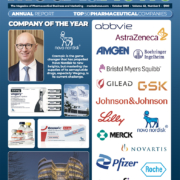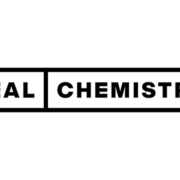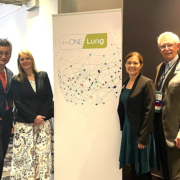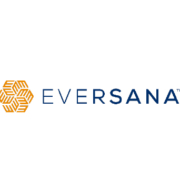What’s ahead for lifescience companies: AI, smart labeling, innovative integration, and more
What’s ahead for lifescience companies: AI, smart labeling, innovative integration, and more
Safety, regulatory, quality and medical information executives at IQVIA discuss key industry trends and challenges for lifescience companies.
As we look ahead to the rest of 2023, lifescience companies are assessing how to address considerable changes in the industry. From shifts in the research of new treatments to how health care is provided to patients, lifescience organizations are undergoing significant changes in how they approach business operations. Further, regulatory agencies around the globe are taking notice of the game-changing technologies driving industry changes and have implemented new regulatory requirements around the use of those technologies.
There is little doubt that these changes are merely aspects of larger shifts in the industry that will continue to emerge throughout 2023 and in the years to come. As organizations continue to adopt technologies such as artificial intelligence (AI), comprehensive labeling technology, and natural language processing (NLP), effectively strategizing technology adoption will be the key to successful technology investment. Companies seeking new ways of executing critical business operations to meet the demands of today’s regulators, patients and healthcare providers should heed the advice offered by IQVIA’s team of lifescience experts below to guide technology adoption and application strategies.
Preparing IT landscapes is essential for large-volume AI analysis
We are in the early adoption phase of AI, heading into the ‘trough of disillusionment’ as the general path of technology adoption trends outlined by analysts. For nearly a decade the terms ‘artificial intelligence’ and ‘natural language processing’ have flooded tech predictions. Everyone’s talking about how AI is going to solve everything, but in the real world we see issues with AI-driven cars, AI-focused business initiatives failing to produce revenue at the largest technology companies, and lifescience companies stumbling over AI-driven initiatives.
AI can work effectively in large volumes, however the analysis hinges on several key factors: Are we working with clean data? Did we remove duplicates? Is the data from a clinical/medical trial or online/social trial? Asking these initial quality questions will help ensure long-term and accurate project analysis.
We have proven that AI can work in volume, but it needs to follow a certain path. In 2023, companies will enact policies that standardize how data is cleaned, managed and approved for AI analysis. Translations of data will be certified by human reviewers, and limitations will be put in place around personal patient information and how it’s stored. This will not only push AI initiatives to success but will ensure IT landscapes and data analytics comply with regional regulations for data privacy.
— Andrew Mitchell, global head of product management and senior director, pharmacovigilance & regulatory technology
Regulatory requirements necessitate the use of smart labeling technology
Due to the increasing importance of traceability throughout the supply chain and tightening regulations mandating comprehensive and up-to-date labeling, lifescience organizations must prioritize labeling technology modernization in their 2023 IT roadmap. Organizations need to be proactive about labeling; most don’t see an issue with the current process, but 50% of recalls are caused by labeling.
The organizations that successfully deploy smart labeling technology, including intelligent automation and NLP, will gain a real-time view of the status of every labeling change and have a better understanding of how to adjust labels and communicate those changes to localization teams around the world. To comply with the digital requirements of the future and stay head of the curve, adopting the next wave of technology to avoid risking noncompliance. NLP and AI will emerge as a widely used, and beneficial, part of the labeling process. The adoption of these transformational technologies is a first step for structured content that can be repurposed in submissions and regulatory processes. The benefits of modernized labeling processes go unrecognized, but in 2023 organizations will see that adapting to digital processes is vital.
— Cham Williams, associate director of business systems
Quality insights will be driven by connected intelligence
Organizations that want to further support quality processes by deploying AI and ML must take a connected intelligence approach to quality operations. This involves deploying true cloud solutions designed for the lifescience industry that connect information from end-to-end enterprise operations and data silos to feed AI and ML algorithms.
Taking a connected intelligence approach also involves solving the AI/ML validation problem. One of the things that held back AI/ML in quality uses for lifescience companies is that software and devices must be validated, which centers around achieving expected results. However, AI and ML is difficult to validate because you could get a new, unprecedented insight from AI/ML analysis which cannot be validated by traditional methods.
Despite these challenges, organizations that fail to take a connected intelligence approach to quality operations will not have access to the right data to reap actionable insights and optimize quality operations.
— Kari Miller, senior director of product management, quality solutions
Skyrocketing safety data volumes require NLP capabilities
The number of adverse events (AEs) that lifecycle safety teams at lifescience companies can identify, track and analyze is increasing drastically every year. In part, this is due to new digital sources of information such as social media, online forums and wearable devices like fitness watches that monitor health signals. In addition, medicines are becoming increasingly targeted towards specific populations for niche treatments. Both of these factors make efficient, compliant safety operations much more difficult if performed through human analysis alone.
That’s why it is critical for companies that have not implemented AI and NLP technologies to support the identification and analysis of potential AEs by 2023 will find themselves failing to keep up with tightening regulations as well as their competitors who have successfully deployed AI for safety operations.
— Alisa Hummings, global head, medical information, local AE intake, and CEVA lifecycle safety
The lifescience industry will experience greater collaboration with regulators
Regulatory agencies around the world have implemented significant requirement changes throughout the past few years. From shortening research-to-market timelines to combat the spread of COVID then removing those pandemic measures so that vaccines and treatments can get full approval, to enabling remote clinical trials for research of other new drugs during the pandemic. At the same time, regulatory agencies and lifescience companies around the world are increasingly using more data and AI-driven analysis than ever before to fuel regulatory submissions and drug research.
In 2023, we’ll start to see more lifescience companies – big and small – working directly with regulators to increase efficiency in the drug research and approval process. To keep up with future regulatory changes, and make sure those changes address the needs of patients, the market, and technology, both sides of the regulatory discussion (lifescience companies and regulators) must collaborate. More integrated approaches to regulation development and strategy will not only speed the pace of innovation within the industry, it will help regulators and companies better understand the use and capabilities of regulatory technologies and make new treatments safer.
— Michelle Gyzen, senior director, strategic solutions, regulatory affairs & drug development solutions
Preparing for the future by paying attention to today’s industry innovation
Regulatory agencies, patients and healthcare providers are now demanding key functionalities and proficiencies that can only be achieved through the adoption and deployment of innovative new technologies that optimize business operations for the lifescience industry. As the industry forges ahead, companies that remain on the cutting edge of innovation will be prepared to meet those demands and outperform competitors where it matters: In the eyes of the customers and regulators.












